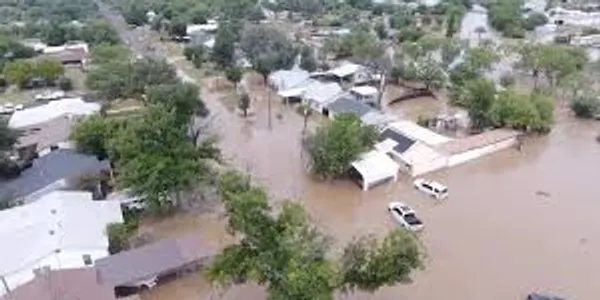Delays in FEMA Response Cited in Internal DHS Documents Amid Budget Constraints and Policy Changes
By: Dr. Kirkpatrick Williams
Published July 13, 2025
Internal Department of Homeland Security (DHS) documents have revealed significant delays in federal disaster response efforts this month due to a combination of budgetary constraints and recent policy shifts, affecting both search-and-rescue operations and disaster assistance call centers.
According to the documents, the Federal Emergency Management Agency (FEMA) faced a delayed deployment of its Urban Search and Rescue (USAR) teams during the initial days of the July 4 through July 7 storm system that devastated multiple counties across the Midwest and South. The delay is attributed to a new expenditure policy requiring personal approval from DHS Secretary Kristi Noem for any deployment-related expense exceeding $100,000.
The policy, which took effect in early June, was reportedly introduced as part of a broader fiscal oversight initiative. While DHS officials said the change is intended to improve accountability in federal spending, internal emails show that the requirement slowed the process of mobilizing USAR teams by more than 36 hours in some regions.
“This approval bottleneck created a critical lag in getting resources where they were needed most,” said a senior FEMA official familiar with the situation, speaking on condition of anonymity. “Lives depend on how quickly these teams can get into the field.”
Collapse in Call Center Capacity
Simultaneously, FEMA’s capacity to respond to disaster-related inquiries and claims was severely reduced when long-standing call center contracts were canceled on July 5. The cancellations were made under a separate administrative directive issued by Secretary Noem, aimed at reevaluating outsourcing agreements across DHS.
During the five-day gap before contracts were reissued on July 10, approximately two-thirds of incoming calls to FEMA’s disaster assistance helpline went unanswered, according to internal logs reviewed by federal auditors. Call volumes spiked during this period as storms swept across Missouri, Arkansas, and Kentucky, leaving thousands seeking housing aid, insurance guidance, and emergency services.
Temporary staffing measures put in place on July 9 helped stabilize response times, but full operational capacity wasn’t restored until after the contracts were officially reinstated.
Implications and Public Response
Emergency management experts say the twin challenges, a delay in search-and-rescue deployment and a breakdown in communication infrastructure, raise concerns about the resilience of FEMA's current disaster response protocols under administrative constraints.
“These systems are built on rapid response and public trust,” said Dr. Karen Leavitt, a professor of emergency management at the University of Colorado. “When either falters, the ripple effects can hinder recovery at the local and state level.”
While DHS has not issued a public statement addressing the documents, a spokesperson for FEMA acknowledged that “process modifications” introduced in recent months have led to "operational adjustments" and added that the agency is conducting a full review of response timelines and contract oversight procedures.
In the affected states, local officials have begun compiling data on missed rescue windows and delayed assistance claims to submit to Congress as part of a formal review of disaster response funding and authorization structures.
Next Steps
Members of the House Committee on Homeland Security have indicated plans to request a hearing to examine the impact of DHS policy changes on FEMA's operations. Meanwhile, state emergency agencies continue to call for clearer communication and greater flexibility in federal disaster support systems.
As the U.S. enters the peak of hurricane and wildfire season, emergency planners are watching closely to see whether additional procedural changes will be made to streamline response efforts and restore public confidence in the nation’s emergency infrastructure.
